
by Jonathan P-Wright | Sep 20, 2024 | Latest, Music News, New Music Alert |
Image credit: stock_photo_world / Shutterstock.com
In a year marked by chart-shattering success, the inimitable Future has once again solidified his status as a musical juggernaut with the unveiling of his latest opus, ‘Mixtape Pluto.’ This release not only heralds the artist’s pursuit of an unprecedented third number-one debut in 2024 but also positions him as a contender for the first artist to secure a trio of Billboard 200 chart-toppers within a mere six-month span.
A Year of Unparalleled Triumphs
As the calendar flipped to 2024, wasted no time in asserting his dominance over the music landscape. In a display of unrivaled artistry and commercial prowess, he kickstarted the year with the release of ‘We Don’t Trust You,’ a collaborative effort with the acclaimed producer Metro Boomin. This dynamic duo’s chemistry was undeniable, as the album swiftly ascended to the coveted number-one spot on the Billboard 200 chart.
Not content to rest on his laurels, Future doubled down on his success, joining forces once again with Metro Boomin for the equally impressive ‘We Still Don’t Trust You.’ This second installment in their musical partnership further cemented their status as a formidable creative force, with the album garnering critical acclaim and commercial success.
A Lyrical Showdown for the Ages
Among the standout moments of ‘We Don’t Trust You’ was the track “Like That,” which featured an unexpected yet electrifying cameo from the legendary Kendrick Lamar. Lamar’s verse ignited a lyrical firestorm, sparking a highly publicized and historically significant back-and-forth exchange with none other than Drake. This clash of titans captivated the music world, leaving fans eagerly anticipating the next volley in this epic rap battle.
Hitting the Road with Unwavering Confidence
Riding the wave of their chart-topping achievements, Future and Metro Boomin embarked on the aptly named “We Trust You” tour, a nationwide trek that allowed them to share their electrifying chemistry with audiences across the country. The tour, which wrapped up earlier this month, served as a testament to the duo’s enduring popularity and the insatiable demand for their live performances.
‘Mixtape Pluto’: A Solo Masterpiece
While his collaborations with Metro Boomin have undoubtedly left an indelible mark on the music industry, Future has proven time and again that he is a force to be reckoned with in his own right. ‘Mixtape Pluto’ stands as a testament to his solo prowess, marking his first full-length release since the critically acclaimed ‘I Never Liked You’ in 2022.
Clocking in at 17 tracks, ‘Mixtape Pluto’ promises to be a multifaceted exploration of Future’s unparalleled artistry. While the initial tracklist did not feature anticipated appearances from Travis Scott and Gunna, the album’s cover art has already sparked intrigue among fans. The striking image depicts the famous Dungeon family house in Georgia, a nod to Future’s roots and the rich musical heritage that has shaped his sound.
A Relentless Pursuit of Greatness
As Future prepares to unleash ‘Mixtape Pluto’ upon the world, the anticipation among his devoted fanbase is palpable. With his sights set on securing an unprecedented third number-one debut in 2024 and potentially becoming the first artist to achieve a trio of Billboard 200 chart-toppers within a six-month span, the stakes have never been higher.
Yet, for an artist of Future’s caliber, such lofty goals are mere stepping stones on a path to greatness. His unwavering dedication to his craft, coupled with an uncompromising artistic vision, has propelled him to the forefront of the music industry, solidifying his status as a true icon of our time.
As the world eagerly awaits the arrival of ‘Mixtape Pluto,’ one thing is certain: Future’s relentless pursuit of musical excellence shows no signs of slowing down. Brace yourselves, for this unstoppable force is poised to once again redefine the boundaries of hip-hop and leave an indelible mark on the annals of music history.
The Rise of the Rapper/Producer Collaborative Album
The success of Future’s collaborations with Metro Boomin is part of a larger trend that has been gaining momentum in recent years: the rise of the rapper/producer collaborative album. These joint efforts, which bring together the creative forces of both a skilled lyricist and a visionary beatmaker, have proven to be a potent formula for chart-topping success.
Synergy and Creative Chemistry
At the heart of these collaborative albums lies a synergistic relationship between the rapper and the producer. When these two creative forces align, the result is a seamless fusion of lyrical prowess and sonic artistry, resulting in a cohesive body of work that transcends the sum of its parts.
One of the key advantages of this collaborative approach is the ability to craft a unified sonic landscape that serves as the perfect canvas for the rapper’s lyrical expression. The producer’s beats and instrumentals become more than just a backdrop; they become an integral part of the storytelling process, enhancing the emotional resonance and thematic depth of the lyrics.
Artistic Exploration and Boundary-Pushing
Another significant aspect of these collaborative albums is the opportunity for artistic exploration and boundary-pushing. When two creative minds come together, they often push each other to new heights, challenging one another to step out of their comfort zones and explore uncharted creative territory.
This spirit of experimentation and risk-taking has given rise to some of the most innovative and genre-defying albums in recent memory. From the genre-bending fusion of hip-hop and electronic music to the incorporation of unconventional instrumentation and production techniques, these collaborative efforts have consistently pushed the boundaries of what is possible in the realm of hip-hop and beyond.
Building a Lasting Legacy
Beyond their commercial success and artistic merit, these rapper/producer collaborative albums have also proven to be a powerful vehicle for building lasting legacies. When two artists join forces and create a body of work that resonates with audiences on a profound level, they etch their names into the annals of music history, solidifying their place as cultural icons.
The enduring impact of these collaborations can be seen in the way they inspire and influence future generations of artists, perpetuating a cycle of creative evolution that keeps the art form fresh and relevant. As Future and Metro Boomin continue to build upon their already impressive legacy, they serve as a testament to the enduring power of these collaborative efforts.
The Significance of the Dungeon Family House
The cover art for ‘Mixtape Pluto’ has already sparked intrigue among Future’s devoted fanbase, featuring a striking depiction of the famous Dungeon family house in Georgia. This artistic choice is more than just a nod to Future’s roots; it represents a profound connection to the rich musical heritage that has shaped his sound and influenced his artistic journey.
The Dungeon Family: A Breeding Ground for Talent
The Dungeon Family is a collective of musicians, producers, and artists that emerged from the vibrant hip-hop scene in Atlanta, Georgia, during the 1990s. This collective, which included influential figures such as OutKast, Goodie Mob, and Organized Noize, played a pivotal role in shaping the unique sound and aesthetic that would come to define the city’s musical identity.
At the heart of the Dungeon Family was the Dungeon family house, a physical space where these creative minds would gather to collaborate, exchange ideas, and push the boundaries of their art. This house served as a breeding ground for talent, fostering an environment of experimentation and artistic growth that would ultimately give rise to some of the most iconic and influential works in hip-hop history.
Paying Homage to Roots and Influences
By featuring the Dungeon family house on the cover of ‘Mixtape Pluto,’ Future is paying homage to the very roots that nurtured his artistic journey. This visual representation serves as a powerful reminder of the rich tapestry of influences that have shaped his sound, from the gritty urban landscapes of Atlanta to the innovative spirit of the Dungeon Family collective.
Moreover, this artistic choice is a testament to Future’s respect for those who came before him, acknowledging the shoulders upon which he stands as he continues to push the boundaries of hip-hop and cement his own legacy.
Preserving a Cultural Legacy
Beyond its personal significance for Future, the inclusion of the Dungeon family house on the album cover also serves a broader purpose: preserving and celebrating a cultural legacy that has profoundly impacted the music industry.
By shining a spotlight on this iconic location, Future is ensuring that the story of the Dungeon Family and its indelible impact on hip-hop culture is not forgotten. This act of preservation is crucial in a rapidly evolving artistic landscape, where the contributions of pioneering artists and collectives can sometimes be overshadowed by the latest trends and fads.
In this sense, ‘Mixtape Pluto’ becomes more than just a musical offering; it becomes a cultural artifact, a testament to the rich tapestry of influences that have shaped the art form and a reminder of the enduring power of creativity and innovation.
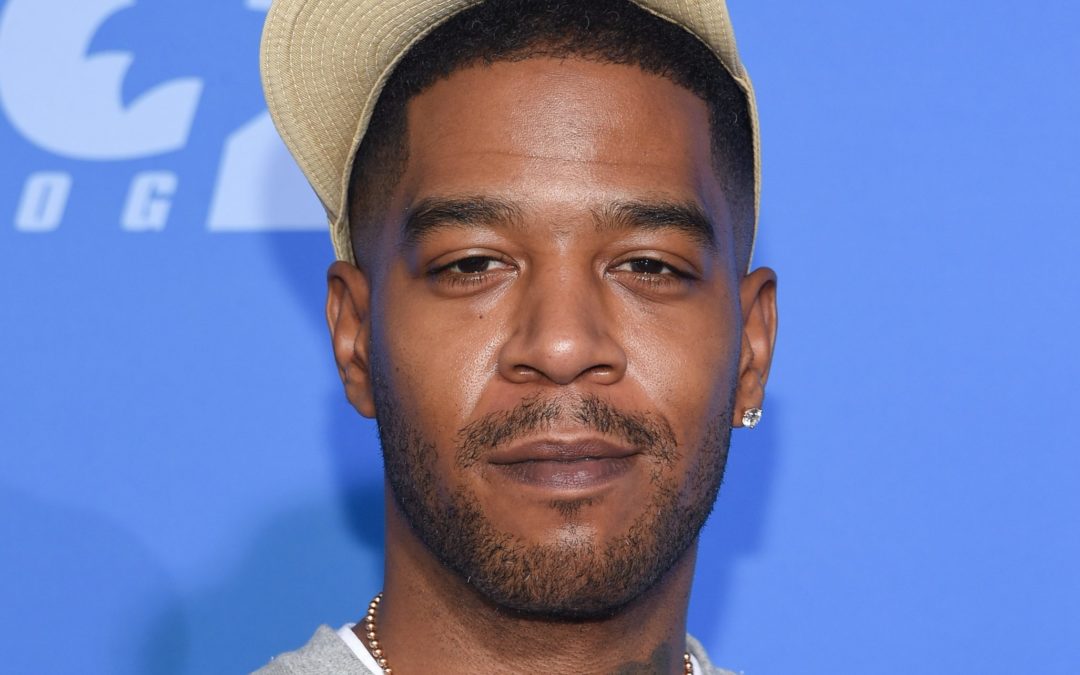
by Jonathan P-Wright | Sep 20, 2024 | Latest, Music News, New Music Alert |
Image credit: DFree / Shutterstock.com
VideoIn a heartfelt homage to the city that embraced him, hip-hop maverick Kid Cudi has unveiled the music video for his latest track, “Don’t Worry,” featuring Chip Tha Ripper. The visuals, self-directed by Cudi, serve as an ode to his profound connection with New York City, a place he fondly refers to as his “second home.”
A Journey Through the Streets of New York
The video opens with a poignant message from the artist himself, setting the tone for the narrative that unfolds. “I moved to NY in 2004,” Cudi’s words appear on the screen. “Over the years, it became my second home. To the people of NY, this is my love letter to you. Thank you for always making me feel like family. I love you endlessly. Enjoy.”
From there, the visuals transport viewers on a captivating journey through the iconic streets of New York City, capturing the essence of the bustling metropolis that has played a pivotal role in shaping Cudi’s artistic identity.
Cinematic Collaboration with Brett Bushell
To bring his vision to life, Cudi enlisted the talents of Brett Bushell, a renowned cinematographer with whom he has forged a strong collaborative bond over the years. Bushell’s expertise in capturing the raw energy and grit of urban landscapes is evident throughout the video, as he seamlessly blends Cudi’s narrative with the pulsating heartbeat of the city.
A Reunion with Chip Tha Ripper
Adding an extra layer of nostalgia to the release, “Don’t Worry” features a guest appearance from Chip Tha Ripper, also known as King Chip. The two artists have a history of successful collaborations, including the RIAA-certified platinum hit “Just What I Am” from 2012, which solidified their creative chemistry.
Exploring Themes of Belonging and Artistic Growth
Throughout the visuals, Cudi weaves a tapestry of themes that resonate deeply with his artistic journey. The concept of belonging and finding a sense of home, even in the most unlikely of places, is a recurring motif. As he navigates the bustling streets, Cudi’s connection to the city is palpable, a testament to the transformative power of art and the ability to forge lasting bonds with places and people.
Moreover, the video serves as a celebration of Cudi’s artistic growth and evolution. From his humble beginnings as a newcomer in the city to his current status as a revered figure in the music industry, the visuals encapsulate the artist’s unwavering determination and resilience.
Tying It All Together: The Moon Man Comic Book Series
Coinciding with the release of “Don’t Worry” is the fourth issue of Cudi’s highly anticipated “Moon Man” comic book series. The series, which debuted in January, has been receiving bimonthly installments, culminating in the September 25th release of issue No. 4. Fans can look forward to the fifth issue, slated for an October 16th release, further expanding the immersive narrative universe crafted by Cudi.
A Multifaceted Artistic Expression
Through the “Don’t Worry” music video and the “Moon Man” comic book series, Kid Cudi continues to push the boundaries of artistic expression. His ability to seamlessly blend music, visuals, and storytelling is a testament to his versatility and unwavering commitment to creating art that resonates on multiple levels.
Celebrating New York City’s Embrace
At its core, the “Don’t Worry” music video is a heartfelt celebration of the city that embraced Cudi and provided him with a canvas to unleash his creativity. From the gritty streets to the towering skyscrapers, the visuals capture the essence of New York City’s indomitable spirit, a spirit that has undoubtedly influenced and shaped Cudi’s artistic journey.
A Lasting Connection and Gratitude
As the video draws to a close, Cudi’s message of gratitude and love for the city resonates profoundly. His words, “Thank you for always making me feel like family. I love you endlessly,” encapsulate the depth of his connection with New York City and the lasting impact it has had on his life and art.
A Reflection on Artistic Journeys and Finding Home
The “Don’t Worry” music video serves as a poignant reminder that artistic journeys are often intertwined with the places and people that shape our experiences. For Kid Cudi, New York City has been more than just a backdrop; it has been a catalyst for his creative growth, a sanctuary where he has found solace and inspiration.
Through his music and visuals, Cudi invites viewers to embark on a introspective journey, encouraging them to embrace the unexpected paths that life may present and to find beauty in the connections forged along the way.
A Celebration of Authenticity and Nonconformity
Underpinning the “Don’t Worry” music video is a celebration of authenticity and nonconformity, values that have been at the core of Kid Cudi’s artistic ethos. By embracing his unique perspective and refusing to conform to societal norms, Cudi has carved out a distinct path, inspiring countless others to embrace their individuality and pursue their passions fearlessly.
A Lasting Legacy and Continued Artistic Evolution
As Kid Cudi continues to push boundaries and explore new creative avenues, the “Don’t Worry” music video stands as a testament to his enduring legacy and unwavering commitment to artistic growth. With each release, he invites his audience to join him on a journey of self-discovery, challenging them to embrace their authentic selves and find solace in the unexpected.
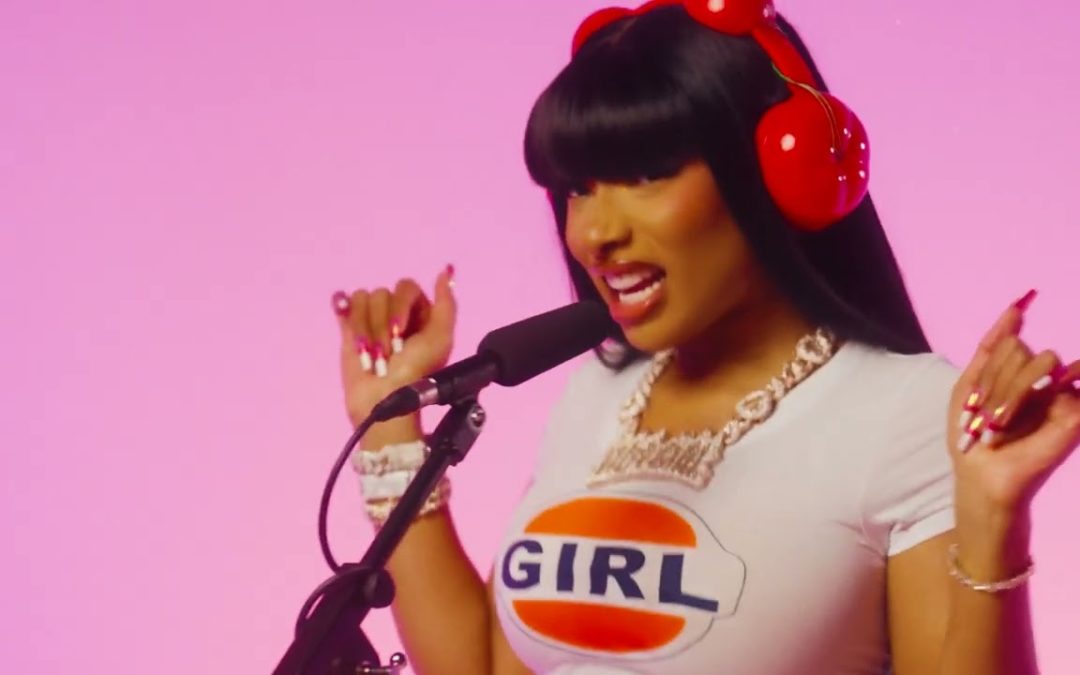
by Jonathan P-Wright | Sep 13, 2024 | Latest, Music News, New Music Alert |
The music world has been set ablaze with the release of Megan Thee Stallion’s fiery new freestyle visual, “I Think I Love Her Freestyle.” This explosive offering from the Houston-based rapper serves as the inaugural installment of her highly anticipated #MeganMonday series, leaving fans eagerly awaiting what’s next from the chart-topping sensation.
Megan’s Lyrical Prowess on Full Display
In this electrifying freestyle, Megan Thee Stallion showcases her unparalleled lyrical dexterity, delivering hard-hitting bars that cement her status as a force to be reckoned with in the rap game. Spitting rhymes over the iconic instrumental of Gucci Mane’s 2008 hit “I Think I Love Her,” the Grammy-winning artist effortlessly commands the track, flexing her lyrical muscles with a captivating flow and razor-sharp wordplay.
Her verses are a potent blend of braggadocious swagger and unapologetic confidence, as she fearlessly proclaims her dominance in the industry. With lines like “Show a new b**ch that ain’t Megan coded, show a beat I was on and ain’t rode it,” she leaves no doubt about her unrivaled skills and unwavering determination to stay at the top of her game.
The Visuals: A Vibrant Spectacle
Complementing the fiery lyrics is a visually stunning music video that captures the essence of Megan Thee Stallion‘s magnetic persona. Directed with a keen eye for detail, the visuals are a vibrant spectacle, featuring the rapper delivering her bars against a striking pink backdrop that demands attention.
The simplicity of the single-shot visual allows Megan’s commanding presence and lyrical prowess to take center stage, ensuring that every word hits with maximum impact. Her confidence and charisma radiate through the screen, captivating viewers and solidifying her status as a true entertainer.
Megan’s Unstoppable Rise to Stardom
Megan Thee Stallion’s meteoric rise to stardom has been nothing short of remarkable. From her humble beginnings in Houston’s rap scene to becoming a global phenomenon, her journey has been fueled by an unwavering dedication to her craft and an uncompromising commitment to authenticity.
With chart-topping hits like “Savage” and “Hot Girl Summer,” Megan has proven time and again that she possesses the rare ability to blend infectious melodies with hard-hitting lyrics, creating a sound that resonates with audiences across the globe.
The Hotties’ Anticipation Reaches Fever Pitch
As the release of “I Think I Love Her Freestyle” ignites the anticipation of Megan Thee Stallion’s devoted fanbase, affectionately known as the Hotties, the excitement surrounding her upcoming projects is palpable. With the “Hot Girl Summer Tour” featuring GloRilla as the opening act just around the corner, fans in North America and Europe are gearing up for an unforgettable live experience.
Moreover, the promise of a new album, which Megan herself teased during an interview on “Good Morning America,” has sent shockwaves through the music community. “This is gonna be the first time that I drop an album on time for the summer,” she revealed, adding, “I do wanna give the Hotties the Megan Thee Stallion experience.”
Megan’s Impact on Hip-Hop and Beyond
Megan Thee Stallion’s impact on the music industry extends far beyond her chart-topping hits and record-breaking achievements. As a powerful voice for women’s empowerment and a champion of body positivity, she has inspired countless individuals to embrace their authentic selves and celebrate their unique identities.
Her unapologetic confidence and unwavering self-belief have resonated with fans worldwide, challenging societal norms and inspiring others to break free from the shackles of conformity. Through her music and her actions, Megan Thee Stallion has become a beacon of hope for those seeking to live their truth and embrace their individuality.
The Future Looks Bright for Megan Thee Stallion
As the “I Think I Love Her Freestyle” visual continues to captivate audiences worldwide, it’s clear that Megan Thee Stallion’s star is only continuing to rise. With her undeniable talent, infectious energy, and unwavering dedication, she is poised to cement her legacy as one of the most influential and groundbreaking artists of her generation.
Whether she’s dominating the charts, setting stages ablaze with her electrifying performances, or using her platform to inspire and empower others, Megan Thee Stallion continues to blaze a trail that is all her own. The future looks incredibly bright for this unstoppable force, and the music world eagerly awaits the next chapter in her extraordinary journey.
Megan’s Unmatched Artistry and Authenticity
At the core of Megan Thee Stallion’s success lies her unmatched artistry and unwavering commitment to authenticity. From her captivating lyricism to her magnetic stage presence, every aspect of her craft is imbued with a raw, unapologetic honesty that resonates deeply with her fans.
Her music is a fearless exploration of her lived experiences, her struggles, and her triumphs, delivered with a vulnerability that is both disarming and empowering. Whether she’s delving into themes of self-love, resilience, or the complexities of modern relationships, Megan’s lyrics strike a chord with listeners, offering a relatable and empowering narrative that transcends boundaries.
Megan’s Cultural Impact and Influence
Megan Thee Stallion’s influence extends far beyond the realms of music, as she has become a cultural icon and a force for positive change. Her unwavering commitment to empowering women and promoting body positivity has inspired countless individuals to embrace their authentic selves and challenge societal norms.
Through her music, her activism, and her unapologetic presence, Megan has become a beacon of hope for those seeking to break free from the shackles of conformity and live their truth. Her impact is felt across various platforms, from social media to mainstream media, where her voice resonates with a clarity and conviction that demands attention and inspires action.
The Evolution of Megan Thee Stallion’s Sound
As Megan Thee Stallion continues to push the boundaries of her artistry, her sound has undergone a remarkable evolution, reflecting her growth as an artist and her willingness to explore new creative territories. From her early days as a rising star in the Houston rap scene to her current status as a global phenomenon, Megan’s musical journey has been marked by a constant pursuit of innovation and experimentation.
With each new release, she seamlessly blends genres and styles, infusing her music with elements of hip-hop, R&B, and pop, creating a unique sonic tapestry that defies categorization. Her ability to effortlessly navigate between hard-hitting bars and infectious melodies has solidified her position as a versatile and genre-defying artist, captivating audiences with her boundless creativity and artistic vision.
Megan’s Collaborative Spirit and Influence
One of the hallmarks of Megan Thee Stallion’s success is her collaborative spirit and her ability to elevate the artists she works with. Whether she’s joining forces with fellow rap titans or lending her talents to pop superstars, Megan’s presence on a track is a surefire recipe for success.
Her collaborations are not merely artistic partnerships but also opportunities for mutual growth and creative exploration. By combining her unique perspective and undeniable talent with the strengths of her collaborators, Megan has consistently delivered chart-topping hits that resonate with audiences across the globe.
Moreover, her influence extends beyond the music industry, as she has become a sought-after voice in various spheres, from fashion to activism. Her willingness to lend her platform to causes she believes in and her unwavering commitment to using her voice for positive change have solidified her status as a true cultural icon.
The “Hot Girl Summer Tour” and Global Domination
As Megan Thee Stallion gears up for her highly anticipated “Hot Girl Summer Tour,” the excitement among fans is reaching fever pitch. With GloRilla as the opening act, this tour promises to be a unforgettable celebration of female empowerment, artistic expression, and unapologetic confidence.
The tour’s North American and European legs will give fans across the globe the opportunity to witness Megan’s electrifying live performances and experience the infectious energy that has made her a global phenomenon. From sold-out arenas to intimate club shows, Megan’s presence on stage is a force to be reckoned with, captivating audiences with her dynamic stage presence and undeniable charisma.
Moreover, the “Hot Girl Summer Tour” represents a significant milestone in Megan’s journey toward global domination. As she continues to conquer new territories and expand her fanbase, she solidifies her position as a true superstar, transcending genres and cultural boundaries with her universal appeal and undeniable talent.
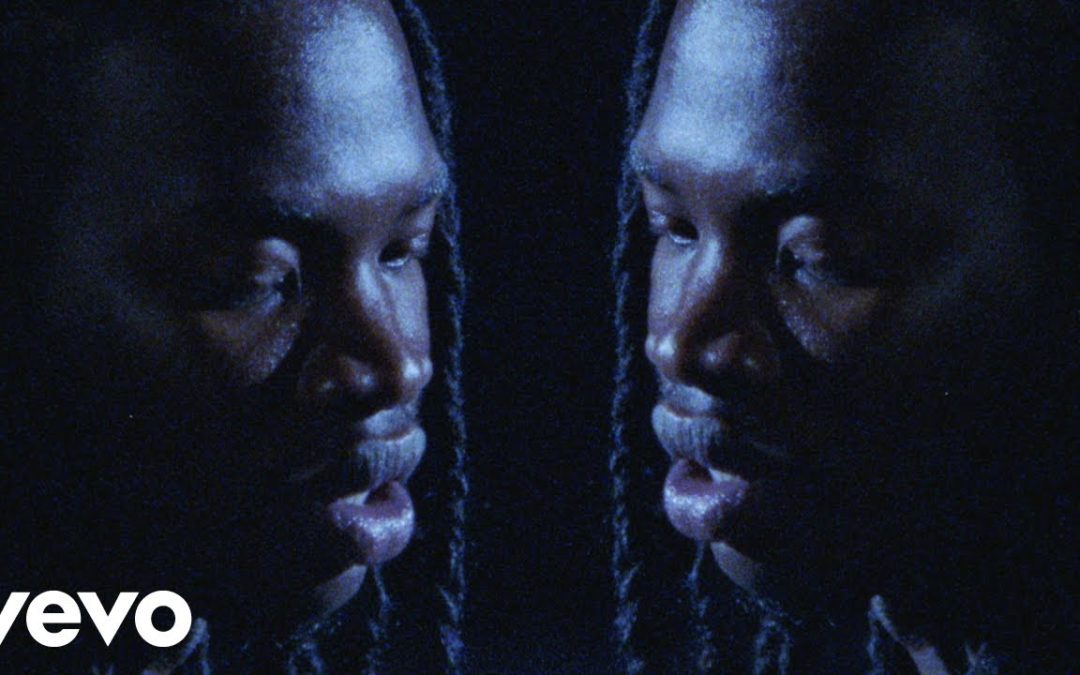
by Jonathan P-Wright | Sep 6, 2024 | Latest, Music News, New Music Alert |
The visionary British artist Lancey Foux has once again mesmerized audiences with the release of his latest single, “On Ur Mind,” accompanied by a spellbinding music video. Directed by the talented Emma Berson, the visual masterpiece takes viewers on a journey through the depths of desire and the complexities of human connection.
A Haunting Melody and Evocative Lyrics
Produced by the masterful duo killthissonny and Lee, “On Ur Mind” is a sonic tapestry that weaves together Lancey Foux’s soulful vocals and introspective lyricism. The track’s melodic cadence and atmospheric production create an immersive experience, transporting listeners into a realm where love and longing intertwine.
The “On Ur Mind” music video is a masterclass in storytelling, where symbolism and surrealism converge to create a captivating narrative. Directed by Emma Berson, the visual component of the project is a testament to the artist’s commitment to pushing creative boundaries.
Throughout the video, Lancey Foux performs the track in a dimly lit, intimate setting, his presence commanding the viewer’s attention. Interspersed with these scenes are haunting shots of a mysterious woman, her identity shrouded in mystery, yet her presence undeniably intertwined with the song’s central theme.
In one particularly striking sequence, Lancey Foux and the woman converge in a surreal, makeshift operating room, their bodies intertwined in a metaphorical representation of the emotional and psychological exploration at the heart of the song.
Lancey Foux: A Visionary Artist Redefining Boundaries
Lancey Foux’s artistic journey has been one of constant evolution and boundary-pushing. With each release, the East London prodigy continues to captivate audiences with his unique blend of raw emotion, introspective lyricism, and innovative visual storytelling.
In an interview with the online shop GOAT, Lancey Foux spoke candidly about the artists who have inspired him to push the envelope, citing legends like Michael Jackson and Prince as sources of inspiration. “Every time I watched a video of theirs, or heard a song [by them], or saw them accepting an award or getting caught by paparazzi, it was a moment. That’s what I’m trying to get to. I’m trying to get to that point where it’s almost effortless,” he shared.
Lancey Foux’s relentless pursuit of perfection is evident in his body of work, which includes critically acclaimed projects like “BACK2DATRAP” and “LIFE IN HELL.” The former, a 12-track offering, featured a single collaboration with the talented Sexyy Red, while the latter, a 22-song opus, boasted contributions from industry heavyweights such as KAYTRANADA, 070 Shake, and Jah$tar.
A Timeless Tale of Love and Longing
At its core, “On Ur Mind” is a timeless tale of love and longing, a universal story that resonates with audiences across generations and cultures. Through his evocative lyricism and stunning visuals, Lancey Foux has crafted a masterpiece that transcends the boundaries of traditional storytelling.
The music video’s haunting imagery and surreal sequences invite viewers to explore the depths of their own emotions, to confront the complexities of desire and the human condition. It is a work of art that demands attention, challenging audiences to question their perceptions and embrace the transformative power of art.
Conclusion: Lancey Foux’s Artistic Evolution Continues
With the release of “On Ur Mind,” Lancey Foux has once again demonstrated his prowess as a multifaceted artist, seamlessly blending music, visuals, and storytelling into a cohesive and captivating experience. This latest offering is a testament to his artistic evolution, a journey that continues to push boundaries and redefine what it means to be a modern-day creative force.
It is this relentless pursuit of excellence, this unwavering commitment to artistic growth, that sets Lancey Foux apart from his contemporaries. With each release, he invites audiences to embark on a journey of self-discovery, to embrace the complexities of the human experience, and to celebrate the transformative power of art.
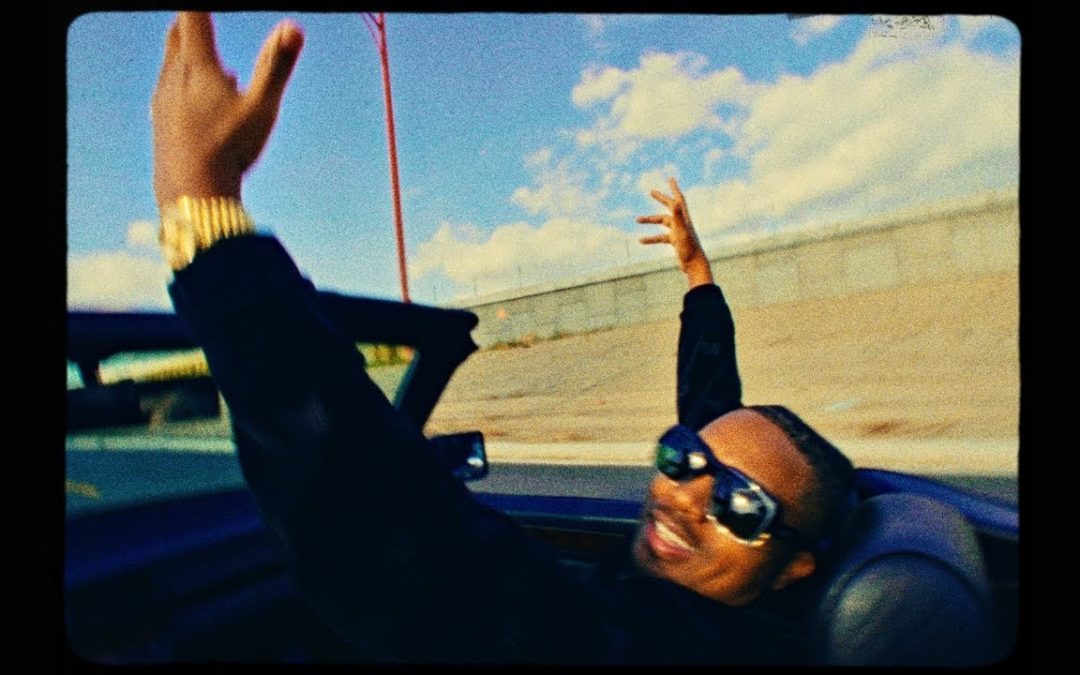
by Jonathan P-Wright | Sep 6, 2024 | Latest, Music News, New Music Alert |
Legendary rapper Nas has once again proved his enduring relevance in the hip-hop realm with the release of his latest music video for the track “I Love This Feeling.” This cinematic offering serves as a testament to the artist’s unwavering presence and creative prowess, taking viewers on an immersive journey through his multifaceted world. From the opening frames that showcase his effortless command of a sleek Mercedes-Benz to the thought-provoking scenes set in a classroom, Nas commands attention with every meticulously crafted sequence.
A Masterful Blend of Lyricism and Visuals
The “I Love This Feeling” video, directed by the talented Leff, is a captivating narrative that mirrors the introspective lyrics found in the song itself. Nas’ poetic wordplay is a true embodiment of his artistic evolution, seamlessly blending his street-savvy roots with a refined, intellectual perspective. The lyrics, such as “A ghetto symphony, I’m Chief Keef Cozart mixed with Mozart, it’s ill when you get bags for your own art,” resonate with a profound depth, showcasing his ability to weave together seemingly disparate elements into a cohesive, thought-provoking tapestry.
Nas’ Enduring Presence in Hip-Hop
Since his groundbreaking debut album, “Illmatic,” hit the scene in 1994, Nas has been a force to be reckoned with in the hip-hop landscape. His unwavering dedication to his craft and his ability to adapt and evolve with the times have solidified his status as a true luminary in the genre. With each successive release, Nas has consistently pushed the boundaries of what hip-hop can achieve, cementing his place as a cultural icon and a source of inspiration for generations of artists.
The Enduring Relevance of “I Love This Feeling”
The release of “I Love This Feeling” serves as a testament to Nas’ enduring relevance and his ability to captivate audiences with his unique blend of lyricism and visual storytelling. The track, taken from his sixth joint release with producer Hit-Boy, “Magic 3,” showcases the synergy and creative chemistry that has defined their collaborative efforts.
In the first episode of their “The Final Act” series, Nas spoke candidly about his close relationship with Hit-Boy, stating, “For me, there’s an emotional moment because to complete something beyond what you thought you were even working on… We didn’t know we’d do six albums. So to be at this point, it’s satisfying, it’s gratifying, it’s a feeling of accomplishment on another level for myself as an emcee, and I’m lucky enough to work with some of the greatest producers in the world.”
Nas’ Artistic Evolution: A Journey Through Time
Nas’ artistic journey has been a remarkable one, spanning decades and encompassing a diverse range of influences and experiences. From his early days as a lyrical prodigy in the streets of Queensbridge to his current status as a revered elder statesman of hip-hop, his evolution has been a testament to his unwavering commitment to his craft.
The Illmatic Era: A Groundbreaking Debut
In 1994, the release of Nas’ debut album, “Illmatic,” shook the hip-hop world to its core. Hailed as a masterpiece by critics and fans alike, the album showcased Nas’ raw talent and his ability to paint vivid portraits of urban life with his intricate wordplay and storytelling prowess. Songs like “N.Y. State of Mind” and “The World Is Yours” became instant classics, cementing Nas’ place in the pantheon of hip-hop greats.
Crafting a Legacy: Nas’ Subsequent Albums
Following the critical and commercial success of “Illmatic,” Nas continued to push the boundaries of hip-hop with a string of influential albums. From the socially conscious themes of “It Was Written” to the introspective musings of “I Am…,” each release showcased Nas’ growth as an artist and his willingness to tackle complex issues with his trademark lyricism.
Throughout his career, Nas has collaborated with some of the most renowned producers and artists in the industry, including DJ Premier, Kanye West, and Damian Marley, among others. These collaborations have not only expanded his creative horizons but have also solidified his status as a versatile and influential force in hip-hop.
Embracing Reinvention: Nas in the Modern Era
As the hip-hop landscape has evolved, Nas has remained steadfast in his commitment to reinventing himself and staying relevant. His recent collaborations with Hit-Boy, culminating in the “Magic 3” album, showcase his ability to seamlessly blend his classic sound with contemporary production techniques and styles.
The “I Love This Feeling” video is a testament to Nas’ ability to captivate audiences across generations, blending his trademark lyricism with stunning visuals that resonate with both longtime fans and newcomers to his artistry.
The Enduring Legacy of Nas
As Nas continues to push the boundaries of hip-hop, his enduring legacy as a pioneer and innovator in the genre becomes increasingly solidified. His influence can be seen in the work of countless artists who have been inspired by his lyrical prowess, his fearless exploration of complex themes, and his unwavering commitment to his craft.
Inspiring Future Generations
Nas’ impact extends far beyond the realm of music; he has become a cultural icon and a source of inspiration for generations of young people seeking to find their voice and tell their stories. Through his art and his activism, he has championed causes ranging from social justice to education, using his platform to shed light on important issues and inspire positive change.
A Lasting Imprint on Hip-Hop Culture
As Nas continues to create and evolve, his lasting imprint on hip-hop culture becomes increasingly indelible. His music has transcended boundaries, resonating with audiences across the globe and cementing his status as a true icon of the genre.
Whether through his groundbreaking albums, his captivating music videos, or his tireless efforts to uplift and inspire others, Nas has left an indelible mark on the hip-hop landscape – a mark that will continue to inspire and influence generations of artists and fans for years to come.






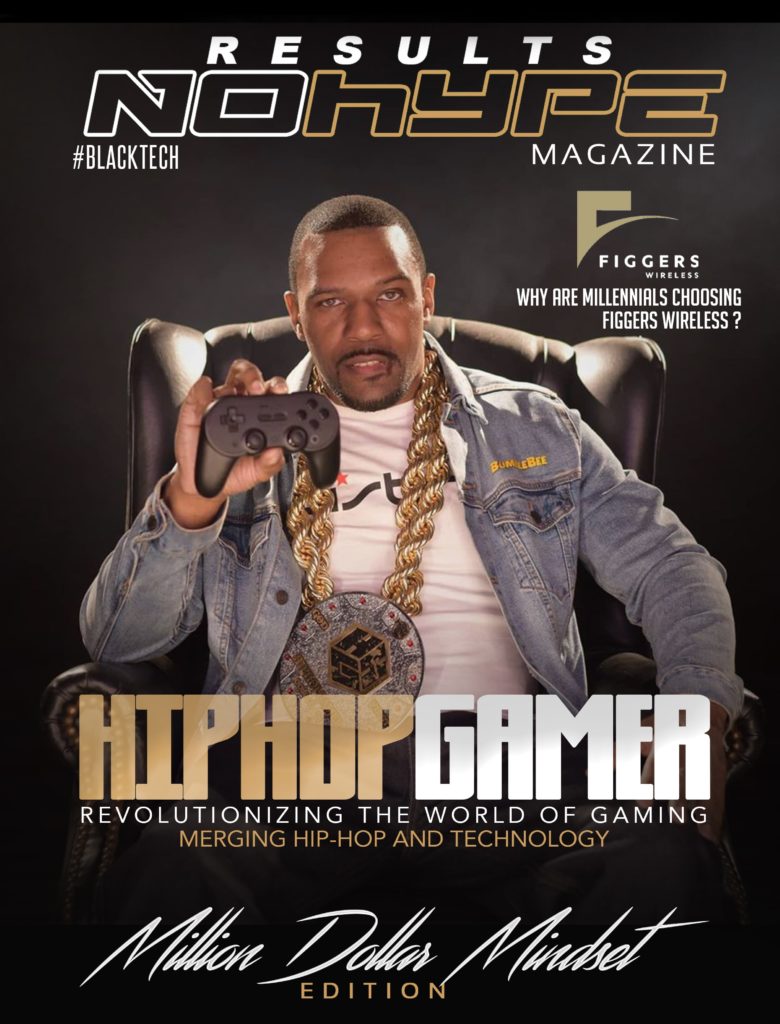
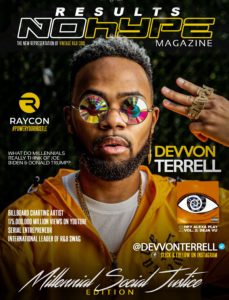
RECENT COMMENTS